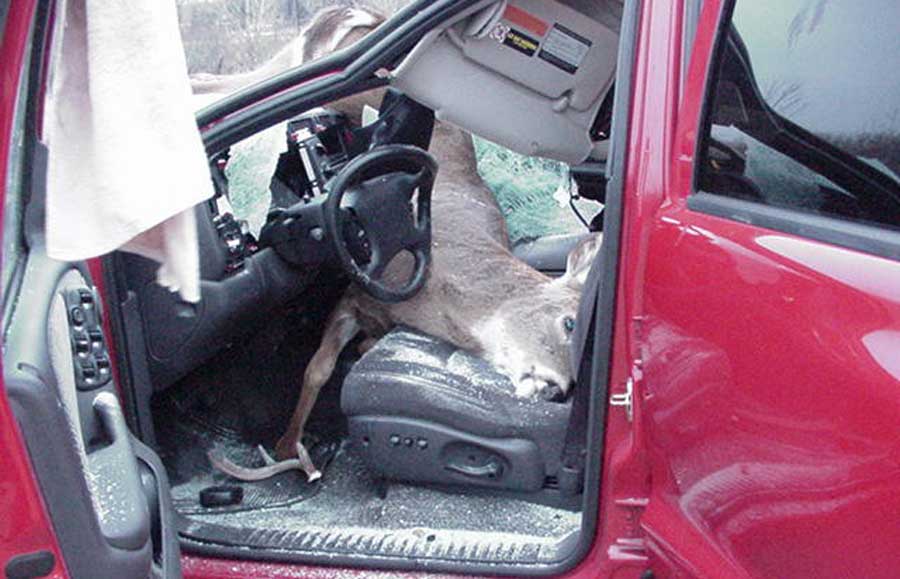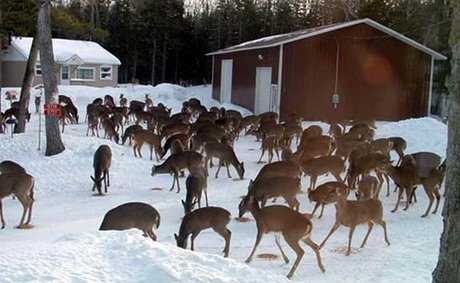Conflicts between deer and humans have been occurring in developed areas for decades. Deer-vehicle crashes, concerns about tick-borne disease transmission, and damage to agricultural crops, gardens, and ornamental plantings are the most common conflicts with deer overpopulation and reasons for wildlife management intervention. Community leaders and individuals are increasingly understanding the delicate balance of wildlife habitats as well as the devastating impact overabundant deer can have on forests and environments.
The most effective wildlife management approach is to humanely remove deer from overpopulation through regulated hunting, which is widely accepted in areas with a hunting culture. However, managing deer to alleviate deer-human conflicts in urban or more developed areas can be controversial. For this reason, a deer repellant program handled by professional wildlife specialists may be necessary.

Read more: How To Protect Fruit Trees From Deer https://www.gardeningknowhow.com/plant-problems/pests/deer/deer-eating-fruit-trees.htm
Problems and Common Conflicts with Deer
To understand the problems and common conflicts with deer and issues that can arise from the overpopulation of deer, consider the following:
Reductions in Tree Diversity
Only specific types of forest tree saplings, such as sugar maple and yellow birch, are eaten by deer. When there are too many deer in a region, certain types of trees are essentially removed from the forests, reducing the forest’s overall diversity. Overgrazing by too many deer also has an impact on meadows, since it eats some plants to the ground while leaving others, such as ferns, to develop. The ferns take over and provide shade, preventing the grass from returning.
Under normal conditions, when cleared land is left to revert to forest, there’s a natural progression of vegetation: grasses are gradually replaced by herbaceous plants and shrubs, followed by native tree species such as cottonwood, locust and sumac. Deer, however, have a strong preference for consuming native plants over exotic invasive plants. As a result, most native plants are unable to recover from the pressure of overgrazing by deer. This allows exotic invasives such as thorny thickets of buckthorn, viburnum and multiflora rose bushes, largely shunned by deer, to become dominant in the landscape.
-EarthSky.org
Loss of Important Forest Habitat
Overgrazing occurs when there are too many deer in a given region, resulting in the loss of important brush and shrubs in forested areas. The loss of undergrowth means that small animals and birds have nowhere to hide and breed. As a result, many native species have vanished because they no longer have access to the habitat they require. Deer numbers can reach or surpass five times what the earth can support in places. Birds that nest on the ground or in low shrubs are no longer able to reproduce and become extinct in the area.
Disease
Ticks that can spread Lyme disease to humans and pets are carried by deer. The more deer that inhabit an area, the more deer tick hosts there are, and the more likely it is that a person would be bitten and get the disease.

Deer-Vehicle Collisions
Deer-vehicle collisions are more likely when there are more deer than there are vehicles. According to Cornell University, around 29,000 drivers in the United States hit deer each year, resulting in at least 211 human deaths.
Deer Population Management
The scarcity of deer predators is partly to blame for the rise of deer populations in several sections of the country. Without natural controls, humans are left to deal with the deer.
Humans are the white-tailed deer’s only major predator. Bobcats, wolves and coyotes used to be major predators but populations of these carnivores have fallen significantly.
-Chesapeake Bay Program
Excess deer are commonly harvested by hunting, which is one of the most prevalent management approaches. In regions where hunting is impractical or ineffective, culling may be utilized. Fencing, the use of deer repellant, and selective planting of flora that are less attractive to deer are some other approaches that can be used to effectively control deer in specific regions. For more info on controlling deer or repelling deer, read: How to Keep Deer Out of Your Garden

